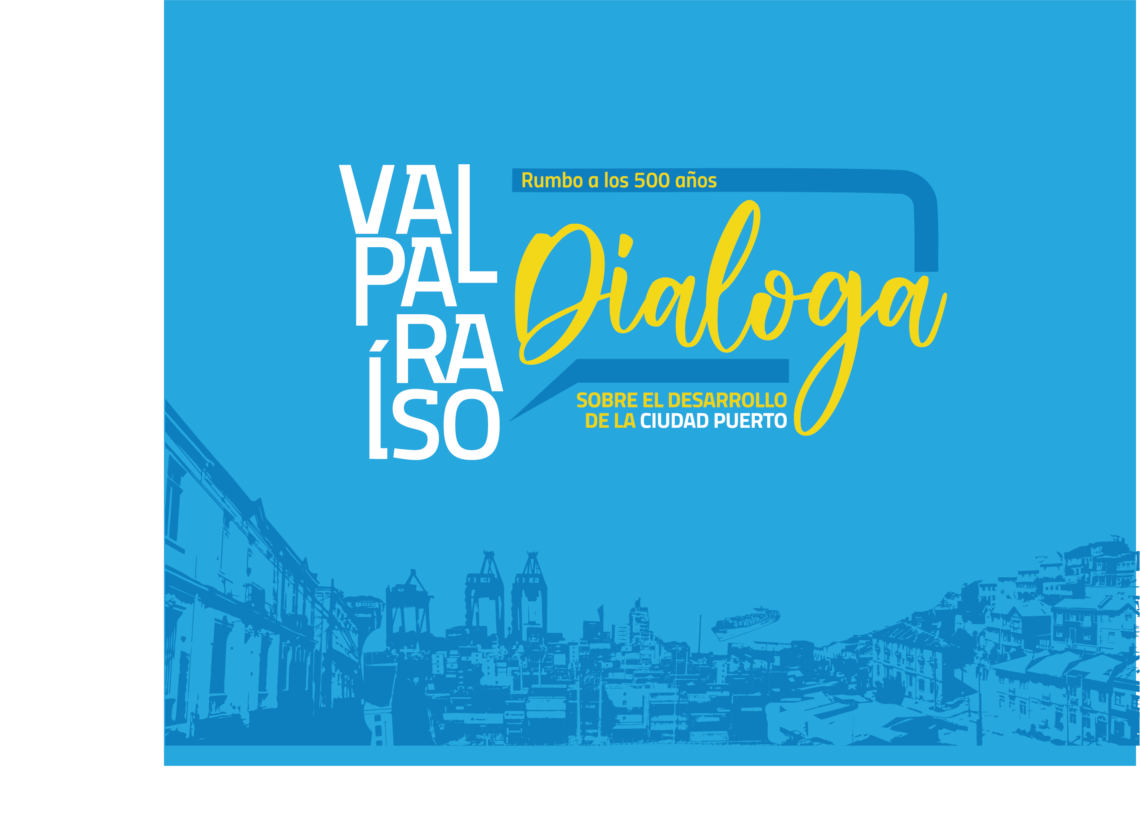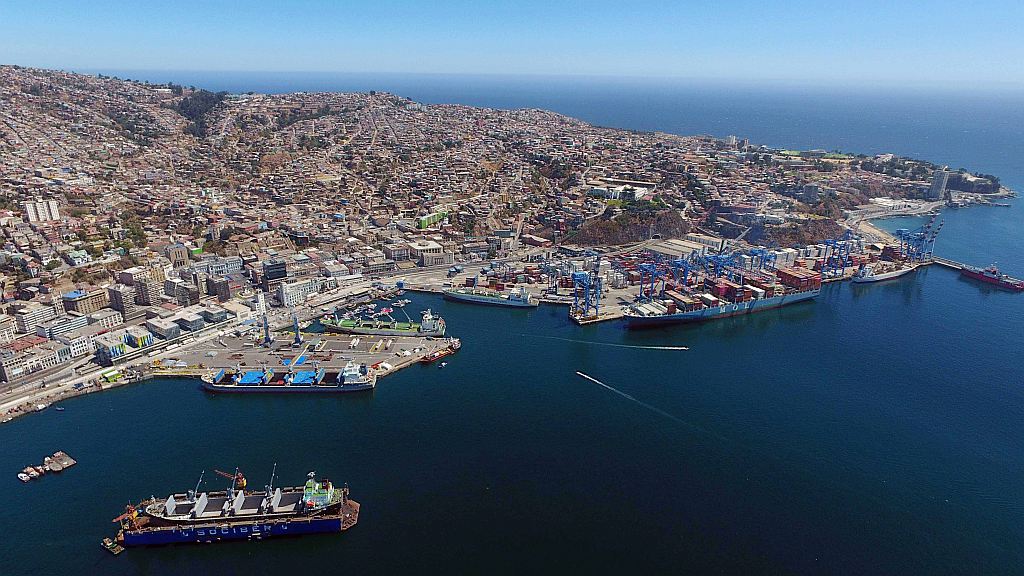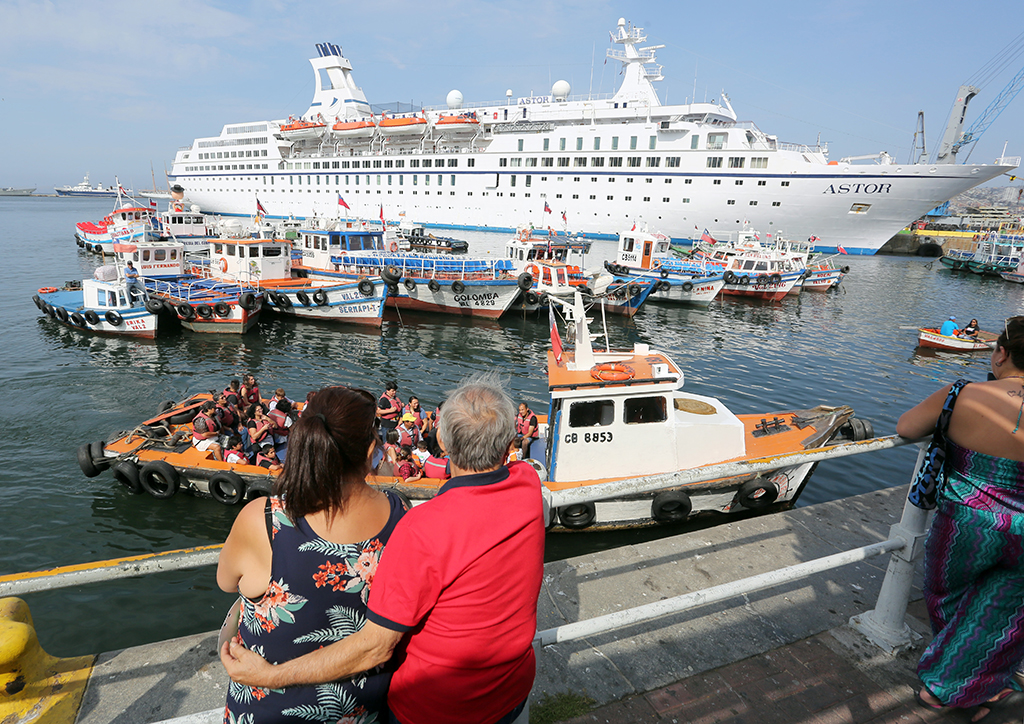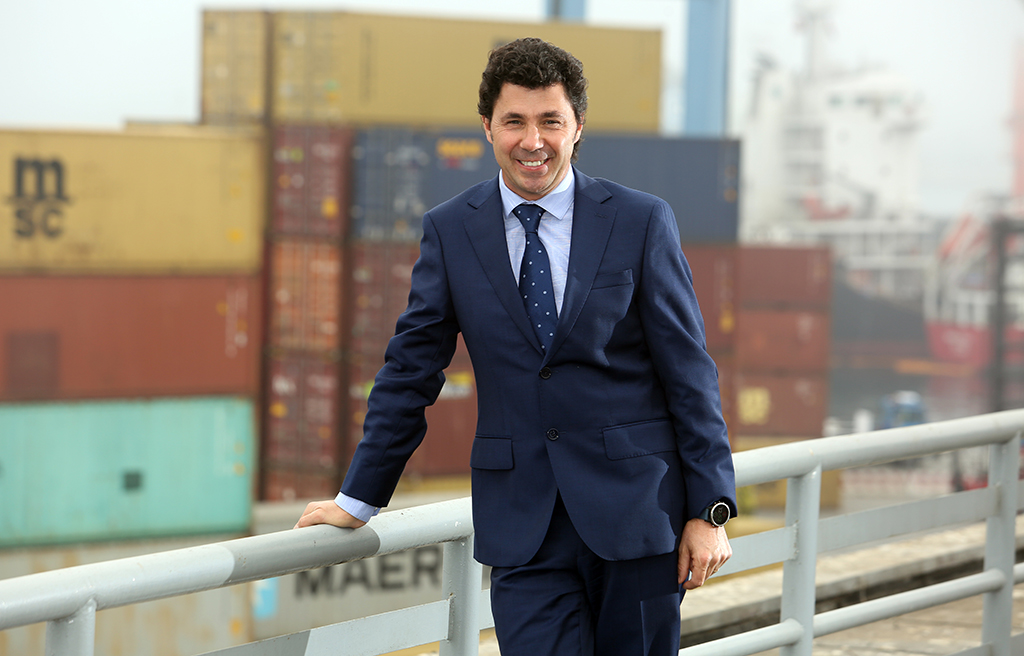Valparaiso is one of the best-known cities in Chile, for its history, its heritage buildings, its academic institutions and – of course – its port. Located in the famous Valparaiso Region, today the inner city has a population of around 300,000 inhabitants, while more than one million live in the metropolitan area.
Valparaiso’s maritime connections have made it a fundamental port for the country, particularly from the 19th century and throughout the 20th. The complexity of its topography is echoed in that of its institutions. Recognition of its historical centre, where the city originated, as a UNESCO world heritage city has presented a major challenge to port expansion in recent years.
With the aim of developing a coherent vision for the whole waterfront, including the port, Valparaiso Port Company (Empresa Portuaria Valparaíso – EPV) launched a new process in January called “Valparaíso Dialoga” (Valparaiso in dialogue), the first stage of which will continue until the end of April. It is intended to enable the port to listen to the various views of the inhabitants and authorities about how to develop the port as the city completes 500 years of existence, and how to forge better port-city relations.
In this interview with Franco Gandolfo, General Manager of EPV, we discover how this process has worked.
Port of Valparaiso, is an active member of AIVP since 2002

Valparaíso Dialoga
AIVP – Port expansion projects frequently generate debate, as they involve global, national and local actors with different points of view and interests. AIVP has followed the debate in Valparaiso, which has received considerable media attention, as well as the opinions aired by citizens, specialists and politicians. What is the greatest challenge for port-city relations in Valparaiso, after years of discussion?
Franco Gandolfo, General Manager of EPV – The Port of Valparaiso has started this new process of dialogue that we have called “Valparaíso Dialoga”. Its main aim is to establish the parameters or conditions which will provide the city with a port expansion to face the challenges of Chile’s foreign trade, and of course meet the needs of industry world-wide consistent with the various important functions of the port city. We hope also to lay the foundations of a new relationship between Valparaiso and its port.
The greatest challenge that we face as a city is to find – involving as many actors as possible – the points of agreement that will allow us to progress with the necessary development of the port in harmony; and at the same time make the most of one of the principal strategic assets of Valparaiso and its port – the sheltered waters offered by the bay. We must also agree how this expansion will strengthen and support other areas of city life, such as its heritage status, tourism, shops, university life, etc.
And where we find differences, see how we can face them, solve them and convert them into opportunities in order to make them assets for the challenges that we will meet in the next few years. Today Valparaiso needs investment and development, and we believe that the port should continue to be a cornerstone of this recovery of this big city that has played such an important role in the country and its history; and of course, the port of Valparaiso must continue to be one of the fundamental pillars of Chile’s foreign trade.

The trust of the people
AIVP – One of the greatest challenges faced by port authorities and port companies like EPV is that the port-city interaction has very deep roots, and yet until recently there was not much dialogue between port and city, either at the institutional level or – most importantly – with the city’s inhabitants. In many cases this has led to a degree of popular mistrust, which has been a barrier to consensus. What is EPV doing to recover the confidence of the citizens of Valparaiso? How will the “Valparaíso dialoga” initiative contribute to this process, and how is it structured?
Franco Gandolfo, General Manager of EPV – Initiating “Valparaíso Dialoga”, a process that was designed with the help of specialists in the area to create trust and peace of mind on both sides, was a way of ensuring calm waters from the start, to allow us to generate, or rather to recover, the trust that is fundamental for this type of action. We believe that the fact that we as a company are open to listen to and dialogue with everyone who is part of the process today – of whom there are many – is a concrete step to increase trust.
Frank, sincere, respectful dialogue, with a willingness to give ground in positions that are sometimes very difficult or complex, will always be good for a city like Valparaiso. “Valparaíso Dialoga” is the key to building that trust.

Engage the stakeholders
AIVP – One of the basic questions in dialogue processes is knowing which stakeholders should be included. You contacted a very wide group of stakeholders to take part in “Valparaíso Dialoga”. How did you decide who should participate in this debate? What challenges have you encountered in this process aimed at involving so many institutions and individuals with such different experiences?
Franco Gandolfo, General Manager of EPV – “Valparaíso Dialoga” seeks to integrate anyone who is interested in talking, voicing an opinion and offering a proposal about the city’s development, our port expansion and the port-city relationship. For this reason we sought a method of work which would allow us to pursue agreements on the principal outlines of Valparaiso’s port activities and the need to expand the port, listening to opinions and discussing subjects like heritage and urban development, tourism and the waterfront, productive and local development, port actors, and social and community development.
We have extended invitations far and wide, including authorities, businessmen, trade associations, civil groups, various professional associations, local inhabitants, port workers and their leaders, etc. In other words, a wide gamut from which no one is excluded.
It is a tremendous challenge to advance in this process in the middle of a pandemic, with health restrictions. Nevertheless, with the help of external consultancy by Fundación Casa de la Paz, we have managed to hold meetings by Zoom and develop the discussion groups. This has allowed for a very rich exchange of opinions between the participants.
In parallel with these Zoom meetings of the discussion groups, we have carried out mass activities in which anyone can participate, through an agreement with the Catholic University of Valparaiso to hold webinars and talks open to anyone who is interested. These have publicised the visions of specialists and the information that they can contribute, helping to ensure that everyone has the same basic information and to enrich the debate over ideas.
City-Port Coordination Council
AIVP – Some years ago, Law Nº 19.542 came into effect in Chile establishing City-Port Councils in order to seek harmonious city-port development. In Valparaiso this council includes various stakeholders, including the municipality, EPV, the Chamber of Commerce, the region, businessmen and planning professionals. What role does the Council have in this new dialogue process, in the future, in the vision of Valparaiso’s 500 years and in the port-city relationship?
Franco Gandolfo, General Manager of EPV – The “Valparaíso Dialoga” process was designed to be open to general participation, not limited in any way. We believe that this connection was necessary; it has allowed us to hear, for example, the value that the vast majority of actors attach to port activities as a factor in the future of the city, and also the high degree of consensus on the need to expand the port. These are very important inputs for the work of all the formal and regulatory bodies.
Once we complete this cycle of dialogue and listening, we will continue with a phase of conversation and progress on the agreements needed to carry out the necessary port expansion, and of course at that point we can include the City-Port Coordination Council.

A coherent vision for the waterfront
AIVP – One of the main objects of “Valparaíso Dialoga” is to develop a consistent vision of the whole waterfront. What do you think are the fundamental elements for this vision? How do you think that Valparaiso’s other values can be incorporated into this vision, for example Valparaiso as a heritage city or a university city? What role will the citizens play in this vision?
Franco Gandolfo, General Manager of EPV – First of all, one main aspect is the compatibilisation of the uses of the waterfront, which belongs to a large number of actors of whom the port is just one. You have to think of the waterfront as a layer that brings vitality to this strip of territory. It is not enough to have promenades and green areas, you need to put these spaces to use and generate the interchange required by the city. Collecting experiences from other ports around the world, you can see the example of the port of Palermo in Italy, where the Master Plan determined that ports relate to their cities in three ways:
- rigid, in strictly port activities of cargo transfer, to which public access is not allowed;
- porous, in cruise ship activities and other regulated maritime activities, with occasional public access as required; and
- fluid, in watersports and cultural and recreative activities, to which there is permanent public access.
Based on this methodological order, the Port of Valparaiso considers that the public spaces of the waterfront are used for the most part in three ways:
- access to the sea, at slipways, quays, marinas, etc.;
- walking or strolling by the sea, in promenades, squares, parks etc.; and
- looking at the sea from lookout points, walkways, etc.
These three types of use together serve to construct the true thickness of the waterfront and seafront layer of any city; if to that we add the ways in which the port relates to the city, we will finally see that there are rigid, porous and fluid waterfronts. We take all these concepts in combination as the basis on which to construct the diagnosis which in turn will serve as the foundation of the future port expansion and the more extensive use that we will give to the waterfront and the seafront as a whole.
Today the city’s waterfront is fragmented, without the vitality imparted by sufficient use for its survival; the infrastructure is also of widely varying quality. For dialogue it is vitally important to incorporate all the actors: the owners, concession-holders, administrators or tenants of the coastal strip. We believe that the final challenge is to co-construct a continuous, accessible coastal system for the city of Valparaiso.
Collaborating with Universities
AIVP – Finally, the Catholic University of Valparaiso is collaborating in the new dialogue process. What role should the academic world play in this sort of process? How can cooperation with universities be established?
Franco Gandolfo, General Manager of EPV – For several years now Valparaiso has been consolidating its position as a focus of universities and higher education; one of the oldest institutions is the Pontifical Catholic University of Valparaiso, which believed in the process from its earliest stages and has been willing to cooperate to ensure that these dialogues reach a successful conclusion.
From this point of view, the academic world is very important for everything that happens in the city, not just the port. We must remember their capacity to do research, carry out studies, contribute an academic and investigative perspective to the development of Valparaiso; and of course the formation of hundreds of new professionals not only from the city, but from the whole of Chile and even other countries.





